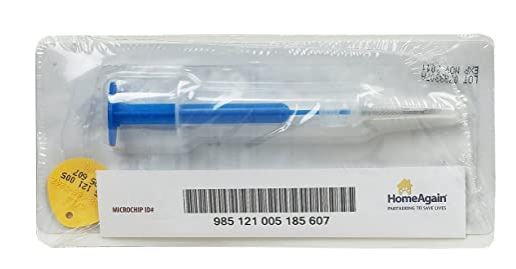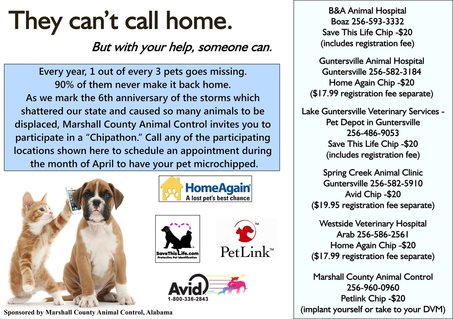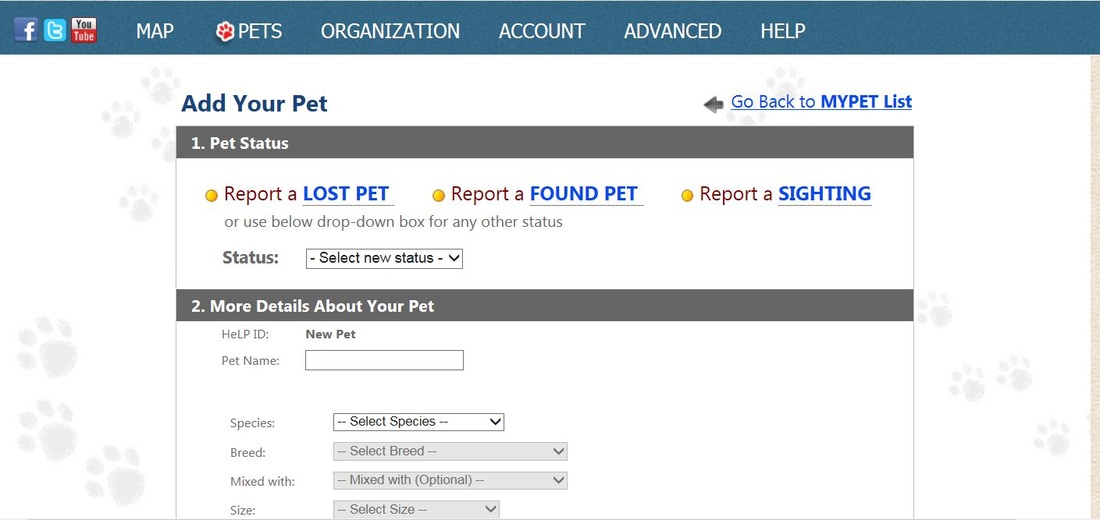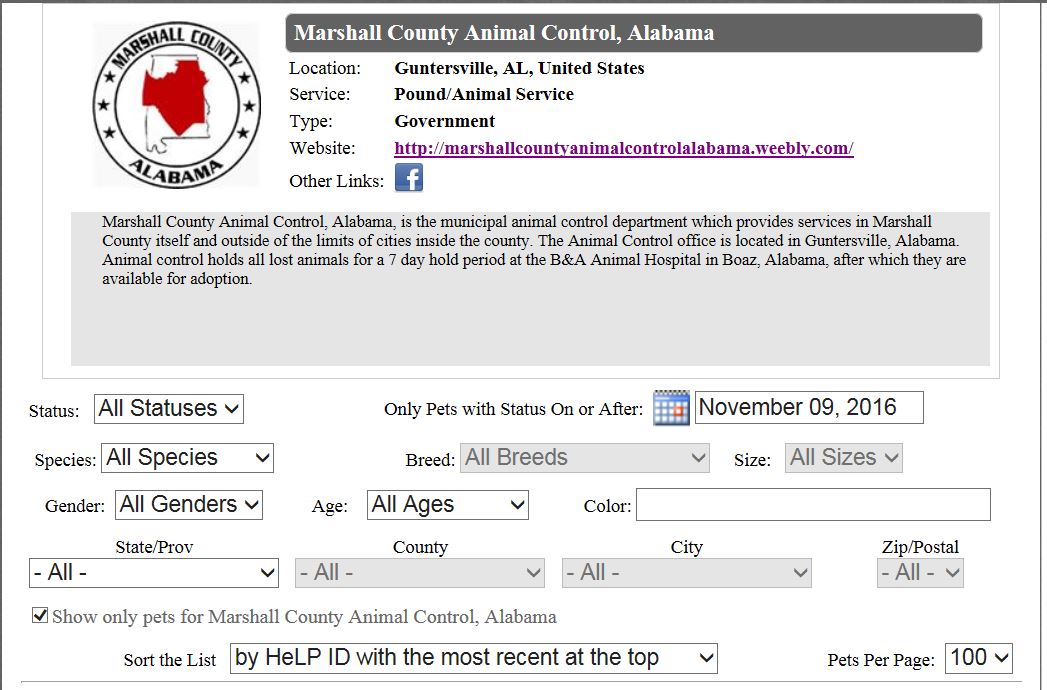|
It happens every day. Pets are displaced from caregivers for a variety of reasons and not all have to do with someone’s irresponsibility. A cat slips outside when a child leaves a door open. A dog escapes a fenced area when a contractor leaves a gate open. A cat is scared by loud noises or fireworks and runs from a yard in fear. A person is in a traffic accident and the dog traveling in the car with them runs off when a door is opened. Severe weather arrives quickly and pets go missing either before or after a storm. We try to do our best to make sure our companion animals are not separated from us, but sometimes our best is not enough. Most animals who get lost or go missing don’t make it back home for one reason: they cannot be identified. I see posts every day on social media about lost animals someone has found. Many people do the right thing and alert local animal control authorities to increase the chance of the caregiver being able to find their lost pet. Just as many people don’t take that step at all, instead choosing to either keep the found animal or give the animal away to someone else. I know people joke about what their pets would say if they could talk and while we know that won’t happen any time soon, it would certainly make it easier to get them back where they belong. “I got lost when I chased a squirrel and then another dog and then a cat. But I live at 123 Main Street. Can you give me a ride home?” There are many ways to help pets be identified if they are lost. A dog collar with a phone number. A collar with a tag what includes a name and phone number. As I have written about before, my go-to recommendation is to have a microchip in addition to these other methods because it cannot fall off, cannot be torn off and cannot be taken off by someone who finds your pet. Our dog wears a collar with his rabies tag, but it also has a tag with his name, on the back of which is his microchip number and the phone number of the manufacturer to call if he is found. A microchip is not a GPS tracker. It’s a small implant, about the size of a grain of rice, that functions using radio-frequency identification which does not require a power source. Think of it like a barcode for your pet. When a microchip scanner is passed over the pet, the microchip gets enough power from the scanner to send the microchip identification number to the scanner. That number is then used to trace the animal back to your registration for the chip. There is no battery, no moving parts, nothing to lose, nothing to charge and nothing to wear out. The microchip will last for the lifetime of your companion animal. Beyond the obvious simplicity of microchip, it has another advantage. If your pet is stolen, the chip is your “proof” that the animal belongs to you. All of this is dependent, of course, on registering the microchip with the manufacturer and keeping that registration information current whether you move or whether you have to re-home your pet yourself for some reason. Just this morning I saw a story on the news about the power of microchipping. A woman in Foley, Alabama, lost her dog more than two years ago. Brooke Lake opened the door of her house and her Beagle, Lilly, “caught a scent and she just ran.” Brooke did all the right things. She searched everywhere, called veterinary clinics, called animal shelters and still could not find Lilly. What Brooke did not know is that Lilly had found her way to a truck stop where someone picked her up and drove her to Oklahoma. Her new caregivers had trouble keeping Lilly inside their fenced yard and took her to an animal shelter. Lilly was scanned for a microchip and was traced back to Brooke. An Oklahoma rescue group will transport Lilly back to Foley this week to a very excited Brooke. This happy story would not be possible without Brooke having taken the time to have her dog microchipped. We hear stories like this often and as amazing as they are, they reinforce for us the fact that microchips work to get pets back home. So, where do you get a microchip and how much do they cost? It varies depending on where you live. If you got your companion animal from a shelter or rescue group, he or she may already be microchipped so check with that organization to get information from them first. Most veterinarians will microchip your pet although some charge a lot for that process. It’s often possible to get your pet chipped for a super low cost at a microchipping event in your area. You can also buy your own microchip and ask your veterinarian to implant it for you. I found a Home Again Microchip on Amazon for $13.75 and at Jeffers for $11.99. If your veterinarian will not insert a chip you purchase yourself to save money, it may be time to find a new veterinarian. Once the chip is implanted, make sure you register it and keep the registration information current. I also recommend having your veterinarian scan your pet’s microchip during regular exams to make sure the chip has not migrated to another part of your pet’s body. I also recommend you use a chip from a reputable company like Home Again, DataMars (Petlink), AKC Reunite, AVID or 24PetWatch. There are some really cheap chips which are part of a 900 shared manufacturer series (used globally) which are not as reliable.
I’ve had people tell me that they don’t think their pet needs to be microchipped because they live inside or are never without supervision outside. Considering how little a microchip costs, and the fact that our companion animals are priceless to us, I think all pets should be microchipped. We just never know what unexpected events may happen and once a pet is displaced from us, it is too late to lament the fact that we didn’t spend $20 to help them get back home. Microchipping is suitable for a variety of species we keep as animal companions. If your animals are not microchipped, please make plans to help them "call home."
1 Comment
 It happens every day in spite of our best intentions. Cats get out through an open door either because they are scared or curious. Dogs jump fences or escape through a gate left open by a child or contractor. So now what? If your dog or cat is gets lost and is wearing a color with some form of identification and the collar stays on, you have a fairly good chance of getting them back if they are helped by a Good Samaritan or they end up in an animal shelter. But what if the collar comes off? What if your pet has been stolen? The reality is that getting your lost or stolen pet back to you is hard work and you may never get them back even if you do everything right. Animals who are loose can cover great distances and animals who have been stolen can be driven great distances. I have written before about the importance of having all pets microchipped, even those who live inside and are ordinarily never outside unsupervised. Life happens, accidents happen and natural disasters happen and there is just no replacement for having your pet chipped so they can be easily identified if they are displaced from you for some reason. If your pet does go missing or is stolen, there are a host of things you can do to try to get your pet back to you and that’s the purpose of today’s blog. This list is not comprehensive by any means. If you read the blog and you have a suggestion which has worked for you in the past or which has worked for someone you know, by all means post a comment to share that information. Contact the microchip company. If your pet is microchipped, contact the company you used to register your chip to let them know your pet is lost or stolen. If your registration information is outdated, update the information with the company. There may be an extra fee to do this depending on the microchip implanted in your pet, but it will be some nominal amount and is worth every penny. Go to local shelters to look for your pet. Many animal shelters have listings of found pets which are in their custody, but many animal shelters do not. There is no substitute for physically going to the shelter or shelters in your area to look for your lost pet. You should take an image of your pet with you to leave with the shelter staff so they will "be on the lookout" for your pet to arrive in the future. You should go more than one time just so you can be sure that your pet did not roam for a period of time before being taken to the shelter by an animal control officer or Good Samaritan. Look for your pet in your area. It may sound obvious, but look around for your pet to see if you can find him or her. You should do this quietly and not by enlisting the help of others. Your friends may want to help you find your lost dog or cat, but if you try to canvas a particular area with people unfamiliar to your pet or calling out your pet's name, you may spook your pet and cause him or her to flee or run into traffic.  List Your lost or stolen pet on a reputable website. If you do an Internet search for “lost pet websites” you’ll come up with enough hits to make your head hurt. The two websites I use most often for posting lost or stolen pets are Helping Lost Pets and Track My Paws. Helping Lost Pets is map-based which means that your post about your pet will show up on a map in a geographic area. You have to register to post your pet, but the process is entirely free. You enter data about your pet (more is better), you include a photo and your pet is listed on the website. It’s just that simple. People who are in your area who are registered on the site receive an email alert about your pet. You can also create a free flyer about your pet using a variety of formats so that you can then print that poster to put up around your area and you can share on social media or email as either a pdf file or an image file. Track My Paws is very similar. You register to post your lost or stolen pet, enter as much information as you can and then your pets is shown on a map. Create a flyer about your lost or stolen pet. When it comes to getting your pet back home, the key is letting as many people as possible know that your pet is missing. We have Amber alerts for children. When it comes to pets, we are left with old school methods of letting people know that we need their help. Create a flyer about your lost or stolen pet which includes a good color image using Helping Lost Pets or using your computer. Print as many posters as you think you can reasonable distribute and then post them in your neighborhood, personally deliver them to the neighbors and businesses closest to where you live and share them on social media and by email with people in your area. Do not offer a reward for your pet. Although this has historically been seen as a way to motivate people to help you, it can actually encourage "dog napping" and can cause people to chase your dog or cat, making them run further away. If you do put up flyers, make sure you go back and take them down once your pet is safely back home.  Use social media. There are a lot of social media pages that relate to geographic areas like cities and counties. Do a search on Facebook for groups or pages in your general area and post about your lost or stolen pet there. Because animals can travel distances, don’t limit this just to the city or town where you live. Try to post about your pet on any page that covers an area within about 60 miles of your location. There is no such thing as posting in too many places to help people know that your pet was lost or stolen and to share images of your pet so that people can be your eyes and ears all around you. If you do post about your pet on social media and your pet is found, please update your posts so that people know your pet is safely back home. People love a happy ending and this gives other people who have lost their pet hope for a positive outcome. Contact the media. Most local newspapers will allow you to run a short ad about your lost or stolen pet. Contact your local paper or papers which service your general geographic area and ask if they will run an ad for you for free. Some small papers may actually include an image of your pet in a small add for which you would pay some nominal fee. If your pet was stolen from your home or from an area where you were staying (campground, neighbor’s house, etc.) contact local TV stations to see if they will run a story for you. Many television stations are very animal friendly and may be willing to do a short story to help you. Entice your pet to return home using bedding and food. Although many pets go quite far once they are outside, some don’t go far at all and are just hunkered down some place because they are afraid. Leave bowls of water and food outside near your home or the place where your pet went missing with some of your pets bedding. You may also want to put an item of clothing you have worn and which smells like you with the bedding. Contact locals. Contact local veterinary offices, animal control agencies and law enforcement agencies to report that your dog or cat is lost or has been stolen and provide them with a copy of your flyer. Sometimes people who find lost pets take them to veterinary offices or turn them in to animal control agencies. If your pet was stolen, you should file a report about that so that it can be investigated, particularly if you think you know who took your pet. Some law enforcement agencies may not take your report seriously, but be persistent and demand help. We don’t like to think of our pets as property, but your pet is your property and theft of a pet is the same legally as theft of other things you own (although much more upsetting, of course). It's always a good idea to talk to local bus drivers and mail carriers to let them know your pet is missing so they can be "on the lookout" for your dog or cat. You can also contact Lost and Stolen Pet Recovery Assistance to see if they can help you. I have known of people who had a pet go missing who never found the pet again. But I also know of people who have found pets after they had been missing for months. When your pet is reunited with you, I encourage you to have your pet microchipped and to take any and all steps within your power to keep them from being displaced from you again. (images courtesy of Shelley Lomanto and Peace and Paws Dog Rescue)
 On April 27, 2011, I was getting ready to go to work when our lives changed. Storms had been predicted for that day. We didn't know that they would turn severe and it would happen fast. I stopped getting ready for work, we packed up our valuables into small bags and we hid in an interior room of our house with our leashed dog until the worst passed. I distinctly recall Rich saying to me, very calmly, "stop screaming. You're scaring the dog" as our house lifted up off of the foundation. It was one of the scariest experiences of my life. That was to be the first of two waves off tornadoes to pass through our area that day. We were very lucky compared to some. Many lives were lost that day and countless homes were destroyed. The F1 tornado that crossed our property did some roof damage to all of our structures, blew out some windows, threw debris all over and downed countless tall pines and cedars, but we were not hurt. We spent a really busy week of clean-up with no power, getting our news from a local radio station on a windup radio Rich had picked up a few years earlier and using a Coleman stove to cook. As we listened to radio broadcasts of damage reports, people trying to find family members and the status of places to find gasoline and ice, we also heard countless stories of animals lost and animals found following the storms. As the weeks and months went by, we learned that thousands of animals who would ordinarily not be separated from their families could not be found and were presumed dead or missing. Large numbers of pets ended up being transported out of state and I never quite understood that process well. Surely there was some way to house found animals so that people could reclaim them, right? Wrong. The sad truth is that even under the most ideal of circumstances not related to natural disasters, most pets who are displaced from their homes never get back home. Whether pets go missing as the result of an open door, unlatched gate or natural disaster, the vast majority simply cannot be identified. They cannot talk, most do not wear identification and most are not microchipped.  Which leads to the purpose of this blog. The first Saturday of April of each year is "Every Day is Tag Day." The third week of every April is "National Pet ID Week." Both of these annual events are used to encourage people to take proactive steps to make sure pets can be identified if they get lost or are stolen. Although a lot of people use collars and tags for this, and there is nothing wrong with that (provided cat collars are the breakaway type for safety purposes), nothing compares to the use of a microchip to make sure your pet can be identified. Chips are manufactured by a number of different companies and are available at a variety of prices depending on where you live and what your veterinarian charges to implant the chip. Some chips are sold with the price of registration included and others require a registration fee in addition to the cost of the chip itself. The chip is about the size of a grain of rice and contains a unique number which is a lot like a barcode. It is implanted under your pet's skin (normally at the base of the neck); in some states this can only be done a veterinarian or pet owner. If your pet ends up at an animal control facility, is found by law enforcement authorities or is taken to a veterinarian by a Good Samaritan, he or she can be scanned and the chip will be tracked back to you, provide you registered the chip and kept your information current. I do volunteer work for my local animal control officer and some of the tasks I do relate to trying to get pets back home. I register found pets on a wonderful website called Helping Lost Pets, I prepare "Found" posters using that same website and I post about found pets on his Facebook page so the posts can be shared and we can find owners. Most of the dogs picked up have collars but no tags. One cat picked up a few weeks ago had been recently spayed. Surely she had a home. But we just could not find it because she was not chipped. Very seldom is a chip found in one of the dog who ends up in our animal control system. The good news in our area is that we have a great track record of keeping animals alive with the help of volunteers, donors, rescuers and adopters. Such is not the case everywhere. In many areas of our state and across the country, the fact that pets cannot be identified means that they are destroyed. To honor the animals lost during the April 2011 storms in our state, we our promoting a Chipathon in our area during the month of April. People can make appointments now to have pets microchipped at one of a variety of locations for very low prices. The cheapest chips cost about the same as the price of a large bag of dog food or a couple large containers of cat litter. My personal hope is that chipping of pets will become the norm and not the exception not only in our area, but across the country. Wouldn't it be wonderful if every lost or stolen dog and cat could be reunited with his or her family? If you love your pets or just value them in some way, please have them microchipped. It could honestly mean the difference between life and death for your pet and is just so easy to do.
 It happens every day. Pets get lost or go missing, people frantically try to find them and in some cases, they never do. As the go-to animal person at my office, I hear about this regularly. The family cat who was scared by fireworks on New Year’s Eve and bolted through an open door. The newly adopted rescue dog who was let outside to relieve herself and ran because she was scared by a car. Maybe the worst one I heard at work was about an elderly dog with limited vision who slipped out a door when some contractors were doing renovation work. The family felt she could not have gone far and did all the right things: searched the neighborhood, knocked on doors, put up flyers, put a “lost” ad in the local paper, put food and her bedding outside. They even went to the municipal animal shelter with photos in hand to look for her, only to be told, “sorry, your dog is not here.” They searched and knocked on doors for days. After almost a week of anguish, the family went back to the shelter one more time on a hunch, only to discover their beloved dog had been there for a week and was scheduled to be euthanized the next day. This family was both lucky and incredibly relieved. Some are not so lucky.  I know that animals end up in shelters for a host of reasons and that some of those reasons have to do with public irresponsibility. But not every animal in a shelter is there because of someone’s fault. We do better at a society to treat each and every shelter animal as someone’s beloved pet who is lost than to presume that “the irresponsible public” does not care enough to keep them safe. Gates get left open by children, contractors pay more attention to ladders and tools than to cats and animals are displaced due to traffic accidents and bad weather. Life happens. It is a reality of our animal sheltering system that healthy and treatable animals are destroyed every day and in most cases these are simply lost pets who could not be identified in order to be reunited with their families. It is a national tragedy. I’m a huge proponent of microchipping all pets whether they live inside of not. You simply must prepare for the possibility that they may end up outside and while collars and tags are also advised (with breakaway collars for cats for safety purposes), nothing can really take the place of what amounts to a barcode for your companion animal to help them be identified if they get lost and end up in a shelter, with a rescue group or at a veterinary office. Most microchips cost very little, including lifetime registration, and really can make the difference in ensuring your pet can be identified if he or she is lost (or even if they are stolen). If you do a simple search on social media using the words “lost found pet” you will come up with a variety of groups and pages all trying to help people find lost pets or trying to reunite found pets with the families searching for them. As valuable as these pages may be, they all have one thing in common. They are geography specific. Just because your dog goes missing from your home in X city doesn’t mean he or she will stay in that city. He may very well end up in Y county for whatever reason and you may never know that. Animals don’t know geographic boundaries and the reality is that once your dog or cat is outside of your control, you really never know how far they will travel either on foot, in the back of a truck bed or in a vehicle or even taken an unknown distance by a good Samaritan who is simply trying to help them. All this leads to an announcement about a wonderful new tool in our animal lover’s toolbox I learned about recently: a website called Helping Lost Pets (HeLP). The website has been active since 2010 and is used across Canada and the United States. The site is the brainchild of Rob Goddard of Goddard Information Systems Limited and is currently funded by his company (with hopes to be funded by sponsors and advertising at some point). I learned about Helping Lost Pets just recently and I’ve been telling everyone I know about it because it’s just such an incredible tool. The concept is simple: the website is a map-based site and is free to use for shelters and animal owners alike. If you run a shelter or animal control department and you pick up animals running at large or found animals reported to you, you enter them on the site with an image and some basics about where they were found. This allows pet owners to look for their lost pets. If you are an animal caregiver and your pet goes missing, you enter them on the site with an image and some basics about where they belong. This allows animal control personnel and social media platforms to help reunite lost pets with their families. Helping Lost Pets describes the website this way: HelpingLostPets.com (HeLP) is a FREE nationwide database for lost and found pets that connects shelters, veterinary clinics, rescue groups, the public, and volunteer groups across the nation to effectively reunite lost pets with their owners. What makes HeLP unique is it is mapbased and fully searchable by breed, location, size, color, gender, and other identifiable information, making it easy to match lost and found pet listings. To ensure our listings stay current, our system automatically contacts owners/finders for status updates at defined intervals. This allows our system to remain uptodate and display only pets that are still missing and truly need our help getting home. We have found that flyers are one of the most effective ways to reunite a lost pet. When someone list a pet, free flyers are instantly generated to provide an effective tool in getting a pet home. What makes the website even more powerful is the many volunteer groups across the country that also use the website to help pets get back home. Lost Dogs of America is their largest partner with chapters in over 30 states now.
If you manage or are affiliated with an animal control agency, rescue group or veterinary office which often takes in lost pets, I cannot encourage you strongly enough to learn about this wonderful resource. If you are a pet owner, I encourage you to take all the normal steps to find your pet: talking to your neighbors, putting up flyers, putting an ad in a local paper, posting on social media, putting food and bedding outside, etc. Having a pet go missing to never be found again can be a life-altering experience for you and can be a life-ending experience for your pet. Please use HeLP. It’s quick, it’s free and you just never know when using that one extra tool in the toolbox will help you be reunited with your beloved companion. Lost Dog Recovery Tips: http://lostdogsofamerica.org/lost-dog/recovery-procedures/ Lost Cat Recovery Tips: http://www.missingpetpartnership.org/recovery-tips/lost-cat-behavior/ |
AuthorI am an animal welfare advocate. My goal is to help people understand some basic issues related to companion animals in America. Awareness leads to education leads to action leads to change. Archives
July 2024
Categories
All
image courtesy of Terrah Johnson
|










 RSS Feed
RSS Feed